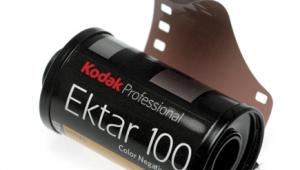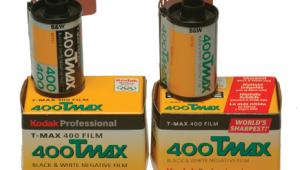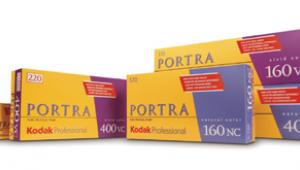Hot New Ektachrome Slide Films
Although the current Ekta-chrome
Elite Chrome 100 and the E100 series films are the best emulsions Kodak
has ever produced, some photographers had been hoping for an even more
highly saturated chrome. Well, Kodak has responded with two films, intended
for those who want "hyper color saturation": the Ektachrome
E100 VS (Vivid Satura-tion) and its consumer counterpart, Elite Chrome
100EC (Extra Color). Boasting the "most vivid, saturated colors
available today in a 100 speed film, with brilliant and dramatic hues,"
they are sure to win many converts. |
||||
Technical Specifics.
Before discussing my evaluations of these films, let's consider
the information provided by Kodak; the following is summarized from press
releases and technical data for both films. |
||||
· The diffuse granularity
rating for the new films is RMS 11, very slightly higher than the RMS
10 for E100S and Elite Chrome 100 and still indicative of ultra-fine grain.
Kodak no longer publishes data on "Resolving Power." |
||||
· Kodak recommends Ektachrome
E100 VS Professional for "nature, scenics, wildlife, food, jewelry,
and any subjects that call for brilliant, dramatic colors." The
information for Elite Chrome 100EC indicates that it will produce "spectacular
nature, landscape, and outdoor slide images." {Note that Elite Chrome
100EC has a very slightly warmer color balance than E100 VS, although
the difference is extremely subtle.} |
||||
Test subjects included a broad
variety, ranging from Mexican folkloric ballet dancers; pure white Spanish
missions; the Point Loma lighthouse; animals at the zoo; spring flowers;
the striking architecture of Balboa Park; the colorful homes of Southern
California; the San Diego skyline; the multi-hued Palazzo at Horton Plaza;
and the extravagantly beautiful Hotel Del Coronado with its trademark
red roofs. While examining the 25 rolls under a 10x loupe, I made the
following evaluations. |
||||
Grain is very fine, much finer
than the specs would indicate. When pushed a stop, however, it does become
more prominent, but maintains a smooth pattern. For more extensive pushing,
I would use Ektachrome E200 which is optimized for use at much higher
"Exposure Indices" with extended processing. In terms of contrast
(moderately high) and definition of fine detail (very good) the new films
are comparable to E100S. Sharpness is even higher, a meaningful achievement
as the E100S already met professional expectations in this regard. |
||||
Frankly, for ideal skin tones
as in portrait photography, I would stick to E100S, but with Mexican dancers,
I did use E100 VS to reproduce their multicolored costumes with maximum
saturation. I found the flesh tones pleasing, though some viewers considered
them a bit too saturated and not as accurate as with the less colorful
Ektachromes. For landscapes, flowers, colorful travel artifacts, nature,
and other outdoor stock photography, the new films would be my first choice.
While some purists still insist on the understated Kodachrome 64 palette,
most photographers--as well as photo buyers--want higher color saturation.
E100 VS and Elite Chrome 100EC will certainly satisfy this group. |
||||
On an unscientific Color Satura-tion
scale of one to 10, I would rate Velvia and the new Ektachromes as a 9,
Kodachrome 64 as a 5, and E100SW and Elite Chrome 100 as a 7.5. Ekta-chrome
E100 VS/Elite Chrome 100EC are definitely more "punchy" than
their predecessors, and some photographers will feel the colors are exaggerated.
Still, whites, grays, and flesh tones remain "clean" without
any apparent color caste. |
||||
Since I am primarily a glamour
photographer, when I evaluate a new film my biggest concern is how it
renders flesh tones. I was anxious to try out the new Ektachrome E100
VS, which was said to offer greater color saturation without too much
contrast, so I photographed several models with this film under a variety
of lighting conditions. |
||||
Mixed sun and shade can be
very tough for any transparency film to handle. Often you lose either
the highlight detail or the shadow detail. The new film handled this situation
well by not losing detail in either, but with a model having a fair complexion
the film surprised me by tending to go very red in the shadow areas. This
photo was taken in a grassy clearing, so reflected light coming to the
shadow areas was mostly bouncing off of grass and dirt, so the redness
of the shadows is even more surprising. I do not find this extremely objectionable
in this particular photograph, but will be very careful in the future
if I want to photograph a fair skinned model under this sort of lighting.
|
||||
|
|
|||




























































